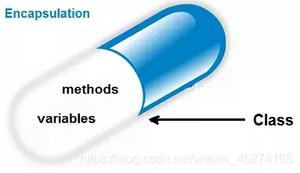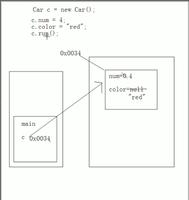裹集合对象
我有以下实体:裹集合对象
public class ComplexEntity { public List<TenderLocation> tenderList;
public ComplexEntity(List<TenderLocation> tenderList) {
this.tenderList = tenderList;
}
}
public class TenderLocation {
public String location;
public List<TenderAirline> tenderAirlines;
public TenderLocation(String location, List<TenderAirline> tenderAirlines) {
this.tenderAirlines = tenderAirlines;
this.location = location;
}
}
public class TenderAirline {
public int ID;
public String name;
public TenderAirline(int ID, String name) {
this.ID = ID;
this.name = name;
}
}
而下面的测试用于比较两个ComplexEntiey:
public class ComplexObjectGraphComparisonExample { @Test
public void shouldCompareTwoComplexObjects() {
// given
Javers javers = JaversBuilder.javers().build();
// Construct test data
// ComplexEntity:
// - List<TLocation>
// TLoation:
// - location: String
// - List<TAir>
// TAir:
// - int ID
// - String Name
int locations = 3;
List<TenderLocation> tenderLocationsBase = new ArrayList<TenderLocation>(locations);
List<TenderLocation> tenderLocationsRef = new ArrayList<TenderLocation>(locations);
for (int j = 0; j < locations; ++j) {
int airlines = 10;
List<TenderAirline> tenderAirlinesBase = new ArrayList<TenderAirline>(airlines);
List<TenderAirline> tenderAirlinesRef = new ArrayList<TenderAirline>(airlines);
for (int i = 0; i < airlines; ++i) {
tenderAirlinesBase.add(new TenderAirline(i, "Airline" + i));
tenderAirlinesRef.add(new TenderAirline(i, "Airline" + i));
}
tenderLocationsBase.add(new TenderLocation("BV" + j, tenderAirlinesBase));
tenderLocationsRef.add(new TenderLocation("BV" + j, tenderAirlinesBase));
}
ComplexEntity baseEntity = new ComplexEntity(tenderLocationsBase);
ComplexEntity referenceEntity = new ComplexEntity(tenderLocationsRef);
// when
Diff diff = javers.compare(baseEntity, referenceEntity);
assertThat(diff.getChanges()).hasSize(0);
// Change a single small thing
referenceEntity.tenderList.get(1).location = "Difference_1";
// then there is a single change detected
diff = javers.compare(baseEntity, referenceEntity);
assertThat(diff.getChanges()).hasSize(1);
// there should be one change of type {@link ValueChange}
ValueChange change = diff.getChangesByType(ValueChange.class).get(0);
assertThat(change.getPropertyName()).isEqualTo("location");
assertThat(change.getLeft()).isEqualTo("BV1");
assertThat(change.getRight()).isEqualTo("Difference_1");
// do another change
referenceEntity.tenderList.get(1).tenderAirlines.get(1).name = "Difference_2";
// second difference is not detected, failing the commented test
diff = javers.compare(baseEntity, referenceEntity);
assertThat(diff.getChanges()).hasSize(2);
System.out.println(diff);
}
}
在比较我的第二个变化是没有确定,因为compare方法没有深入比较我的列表。
我已经在这里
http://www.atetric.com/atetric/javadoc/org.javers/javers-core/1.3.4/org/javers/core/Javers.html
阅读,如果我"wrap collections in some Value Objects"深比较集合是可能的。
我的问题是,我怎样才能将我的收藏包裹到Value Objects?
回答:
你可以用像下面的对象的东西:
public class Wrapper {
private final WrappedObject obj;
public Wrapper (WrappedObject obj)
{
this.obj = obj;
}
}
回答:
什么是错误的,你的代码是映射,你没有做到这一点的。
public class TenderLocation { @Id
public String location;
...
public class TenderAirline {
@Id
public int ID;
public String name;
...
否则,JaVers你的类映射为Value Objects(无身份对象),让你有限的差异经历:你应该使用@Id注释Entities映射你的实体。
以上是 裹集合对象 的全部内容, 来源链接: utcz.com/qa/261749.html





